“Trowelling Through History”
Published in Early Modern History (1500–1700), Features, Issue 3 (Autumn 1998), Volume 6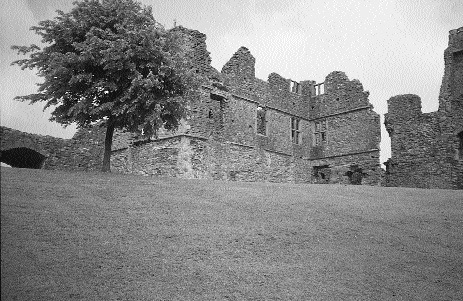
The fortified house at Castlecaulfield, County Tyrone.
For many people archaeology is primarily concerned with Ireland’s prehistoric past, and many archaeologists do indeed investigate and interpret monuments associated with our earliest ancestors. Other archaeologists concentrate on the Early Christian and medieval period—on sites associated with Ireland’s early historic past—when documentary sources become available to assist, compliment or contradict the evidence revealed from the landscape and the soil. There is no ‘cut-off’ date however, and some archaeologists have directed their attention to the study of monuments from the mid-sixteenth to the early-twentieth centuries.
This era has been archaeologically classified under a number of names. In Ireland and Britain the period 1500 to 1900 has been termed ‘post-medieval’ or ‘early modern’. In those areas of Asia, Africa, Australia and America which experienced European contact and conquest from the sixteenth century onwards the term ‘historical archaeology’ is preferred. The nineteenth and twentieth centuries were a time of rapid industrialisation and the term ‘industrial archaeology’ has been applied to the study of the social and economic remains of that development. Whichever term is chosen, however, the archaeologist’s understanding of the recent past benefits from the combination of documentation with the evidence obtained through archaeological practice.
Planters and Gaels
The period after 1609 saw a wave of immigrants enter Ulster from Britain in the aftermath of the Nine Year War and the subsequent conquest by the Crown of that most Gaelic part of Ireland. As the incoming landowners established themselves on their new properties their efforts were monitored and surveyed by the London administration. In 1611 Sir Toby Caulfield was making preparations for the construction of a fortified house and bawn (defended enclosure) at Castlecaulfield in County Tyrone. A square stone bawn ‘of special mark both for beauty and strength’ with battlements and four defensive corner towers is reported in a survey of 1613. In addition, the materials had also been assembled for the construction of the house within the bawn and some English tenants were already ‘seated near unto the same’. By 1619 the ‘fair house’ was well under construction, clearly the U-plan ruined mansion that still exists in state care at the site today. A bridge of lime and stone with adjoining watermill had also been erected and a town with fifteen English families was located near the bawn. In 1622 the ‘fair large Castle of lyme and stone’ is again reported and a variety of other buildings had been erected in the bawn, including a gatehouse, a stable with a loft, and two timber-framed houses. In addition, the settlement boasted an orchard, a garden, enclosed fields and a village of ‘twenty houses of English fashion inhabited all by British, whereof most are artificers and handicraftsmen’.
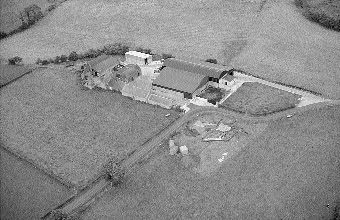
Aerial view of the excavation of a planter’s lot at Salterstown, County Londonderry. (Barry Hartwell)
These surveys are concerned primarily with what Caulfield has achieved as an undertaker. They are not concerned with the individuals who travelled to Ulster and settled beside his fortified house. What was the format of their village? Where was it located? What types of ‘English fashion’ houses were present? Besides being ‘artificers and handicraftsmen’ what were the occupations of the inhabitants? What tools or household utensils had they taken with them to Ulster? And what (if any) was the level of contact with the native population?
In 1988 and 1989 Orloff Miller, an American archaeologist with experience of archaeological research in colonial America, undertook a small-scale excavation at Salterstown, a Londonderry plantation village on the shore of Lough Neagh. The castle and bawn survive as much-altered ruins but the village (shown on a pictorial map of 1622 by Thomas Raven) has disappeared, although the dog-legged street onto which the houses fronted survives today as a country lane running up to the gates of the bawn. Combining cartographic evidence and field survey, Miller identified the location of one planter’s lot on the western side of the village and then carried out his excavation which enabled him to monitor the degree of transplantation of English material culture into this Ulster settlement through the medium of surviving artefacts. In addition, ‘native’ pottery was discovered, indicating modest trade presumably for the vessels or for what they contained, while Irish cobblers were evidently supplying the inhabitants with footwear during the second phase of occupation at the site (1657 to 1689) since two shoes of Irish brogue tradition were uncovered in a well, and other examples of English-style shoes had been repaired by a cobbler skilled in using the Irish thong-lacing technique. Although of limited duration and extent, the excavation provided physical evidence that offers an insight into the nature of the localised trading activities that were in operation at this settlement. In addition, it has highlighted how archaeological evidence can contribute to our knowledge of cross-cultural economic interactions between Ulster’s planters and Gaels in the seventeenth century.
Houses, homes and people
The archaeological study of an abandoned settlement can provide a perspective on the social organisation and associated economic activities of the people who once lived there. Some forty years ago Buchanan, Johnson and Proudfoot directed an excavation at Murphystown, County Down. On the northern shore of Dundrum Bay, Murphystown was a clachan (a cluster of farm dwellings and associated out-houses) which had gradually become abandoned over the course of the late nineteenth and early twentieth century. Confronted by a dearth of historical documentation to elucidate the origins and development of the clachan as a primary form of rural settlement in early modern Ireland, an excavation was undertaken at the site. The discovery of foundation trenches and wall footings underneath and unrelated to the site’s standing buildings indicated both the prolonged use of the site and that the settlement’s layout had been radically altered over time. This was of importance to the study of clachans since it provided evidence that their morphology did not always remain constant and suggested that the nineteenth-century elements that survive in the landscape today might not always reflect the composition of a settlement during its earliest phases.
The careful investigation of the architecture of a historic building can also provide a view into its history. Periods of renovation and alteration can leave tell-tale scars on a building’s fabric. When studied in conjunction with evidence obtained during excavation or retrieved through the study of relevant drawings, maps and documentary sources, this anatomical information can help establish a chronology for a building’s origins, use and (if applicable) decline. Linzi Simpson’s work at Smock Alley Theatre in Dublin provides a good example of this research process in action. Located in Essex Street West and Lower Exchange Street in the Temple Bar area, the redevelopment of the former church of SS Michael and John (built between 1811 and 1815) as the new centre for Dublin Tourism’s Viking Adventure provided an opportunity for a closer look at the building’s fabric. This had been the location of the Smock Alley Theatre, first built in 1662 and then rebuilt in 1735. As the redevelopment work progressed and the plaster was removed from the church’s internal walls a series of built-up doorways and windows were revealed. These blocked openings were clearly unrelated to the building’s historic function as a church and hinted that the building had a history that was older than previously thought. A programme of archaeological and architectural investigation followed, and this revealed that the entire eighteenth-century theatre building had survived the early nineteenth-century change of function; it had simply been converted for its new life as a church. Through this research one of the oldest surviving buildings in the city has been revealed to us again.
Archaeology can also supplement research into architectural heritage by examining the surviving material culture of people who lived in certain houses. Artefacts offer a voice to those whose lifestyles are poorly represented in surviving historical sources: soldiers, factory workers, prostitutes, labourers, miners, farmers, domestic staff—the forgotten people of history, the impoverished and the illiterate, whose everyday activities and social organisation are rarely recorded in documents. For this reason Charles Orser’s ongoing investigation at the eighteenth- to twentieth-century tenants’ settlement in Gortoose on the landed estate of Strokestown Park House, County Roscommon, represents an exciting new development in Irish archaeology.
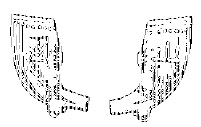
Examples of nineteenth-century clay pipes recovered during the excavation at Winetavern Street, Belfast. (Environment and Heritage Service, Dept. of the Environment, Northern Ireland)
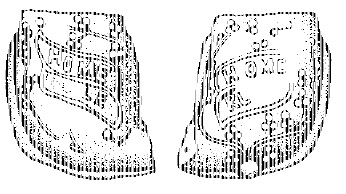
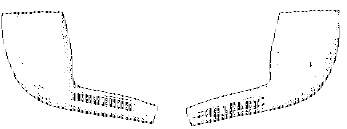
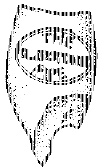
Orser’s application of a research methodology tried and tested in a North American context for, among other things, the study of the living conditions experienced by African-American slaves on eighteenth- and nineteenth-century plantations has the potential to generate evidence that will provide new perspectives on the lifestyles of head-tenants and sub-tenants on Anglo-Irish estates of comparable date.
Another means of obtaining information on our ancestors is through the examination of their physical remains. The excavation of early modern cemeteries can provide important osteo-archaeological and palaeo-pathological information. Rickets, caused predominantly by a deficiency of vitamin D due to lack of exposure to sunlight or, in some cases, poor diet, is characterised by brittle bones, bow legs and retarded growth. The disease is largely associated with the industrial era, being prevalent among the urban poor living in smog-polluted slums. One adult male skeleton displaying classic symptoms of rickets was discovered in a nineteenth-century context during excavations in Waterford. Examined by Catryn Power and Robin O’Sullivan, the remains showed that the man had suffered from vitamin D deficiency during childhood and adolescence and had died in his late twenties or early thirties, a mute witness to the hardships of city life for the poor in the last century.
Clay pipes and tanning pits
As the addiction to tobacco grew in Europe following its introduction from America in the mid-sixteenth century, so too did the number of clay pipes produced for its consumption. Relatively cheap to purchase, clay pipes were mass produced. They were also easily broken and, as a result, often had a brief working life before being discarded. Early pipe bowls were slender and small with the bowl at an angle to the stem. As tobacco became cheaper, however, the pipe bowl became larger. This chronological evolution has been well charted by archaeologists and clay pipes can be as valuable a discovery during an excavation as coins, since they can be used to broadly date excavated layers and associated artefacts.
Trade directories list over two dozen clay tobacco pipe makers in nineteenth-century Ireland. The Hamilton family, who made pipes in Belfast from around 1813 to 1933, was perhaps one of the best known manufacturers, and by 1907 they also worked under the name of the Ulster Pipe Works. Such was the volume of clay pipe retail in Belfast’s Winetavern Street that it became popularly known as ‘Pipe Lane’. Late nineteenth- and early twentieth-century descriptions and photographs of the Belfast pipe industry illustrate the range of pipes produced and the processes involved, from the import of white clay from Devon, though rolling and shaping the clay, to moulding, hardening and firing the pipes. In spring 1990 roadworks on Winetavern Street exposed numerous clay pipe fragments and associated debris. The excavation that followed retrieved twenty-seven types of late nineteenth-century pipes, ranging from the ‘cutty’ (a small, plain pipe), through those embellished with masonic symbols (compasses, plumb bobs, wheat sheaves, fruit) to pipes bearing more overtly political symbols and slogans (the Red Hand of Ulster, ‘Home Rule’ and ‘Gladstone’). Clearly, the Hamiltons tailored their production for a range of customers and markets. One type, documented but not discovered, was the ‘Wannamaker Stores’ pipe, exported to the United States and presented to customers on St Patrick’s Day.
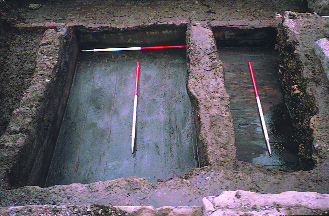
Coleraine tanning pits revealed. (Audrey Gahan)
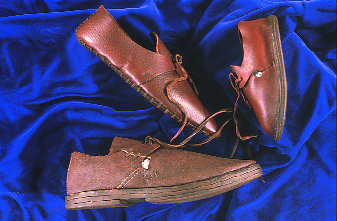
Reconstruction of leather shoes found in the well at Salterstown during Miller’s excavation. (Environment and Heritage Service, Dept. of the Environment, Northern Ireland)
Although manufacture is recorded as being at Balhurst Court, many of the pipes recovered during the excavation at Winetavern Street were ‘wasters’, bearing unmistakable signs of faulty production or breakage during manufacture. In addition, the discovery on site of ashes and kiln furniture debris confirmed that pipe production had indeed been undertaken at Winetavern Street, with analysis of the industrial waste suggesting that two types of kiln were fired, a ‘muffle’ and an ‘open chamber’. This is interesting since here the evidence of archaeology contradicts both documentary and descendants’ oral history. A similar contradiction was encountered during an excavation directed in Coleraine town centre by Audrey Gahan in 1993 when four seventeenth- and eighteenth-century tanning pits were discovered. Although leather was an important material in society, its production was an odorous activity. As a result, tanners were often forbidden to work within towns. There is documentary evidence that the operation of tanneries within Coleraine’s town walls had been banned in 1674, yet the archaeological evidence retrieved from the historic town centre indicates that the local authorities had evidently turned a blind eye to the activities of the tanners who were operating in Stone Row.
Conclusion
The selection of projects presented in this article are all indicative of how archaeological research can contribute to the study of our early modern past. Although a fledgling wing of the discipline in Ireland, the experience from other parts of the world indicates that historical archaeology has the potential to develop into a major research area and that the relics of Ireland’s recent history—her country houses, gardens, cottages, fortifications, farm buildings, shipwrecks, kilns, places of worship, factories, mills and industrial machinery—would be open for archaeological investigation. In addition, examination of the everyday objects found at these sites can shed light on the lives of our ancestors. The study of history relies on documents, but where these do not survive, are limited in detail and scope, or never existed in the first place, then ‘blind-spots’ will occur. Other forms of evidence must then be pressed into service—including the work of archaeologists. Early modern society witnessed the mass production of all sorts of goods, from China cups to clay tobacco pipes, from glass bottles to brass buttons. Since today’s rubbish are tomorrow’s relics the study of these forms of material culture as retrieved through excavation can provide insights into the consumer choices and tastes exercised by our ancestors: the household goods they could afford and, conversely, those that they could not. The case-studies we have highlighted indicate how the pooling of archaeological and historical evidence can be of mutual benefit to both disciplines in Ireland. The continuing development of dialogue between the two is to be both welcomed and advocated.
Colm Donnelly is an archaeologist on the Mullycovet Mill Project, Belcoo, County Fermanagh. Nick Brannon is Principal Inspector, Built Heritage, Environment and Heritage Service, Department of the Environment, Northern Ireland.
Further reading:
D. Crossley, Post-Medieval Archaeology in Britain (Leicester 1990).
C.E. Orser, jnr. and B.M. Fagan, Historical Archaeology (New York 1995).
C.E. Orser, jnr., ‘Can there be an Archaeology of the Great Famine?’, in C. Morash and R. Hayes (eds.) Fearful Realities—New Perspectives on the Famine (Dublin 1996).
L. Simpson, Smock Alley Theatre: the evolution of a building (Dublin 1996).


















